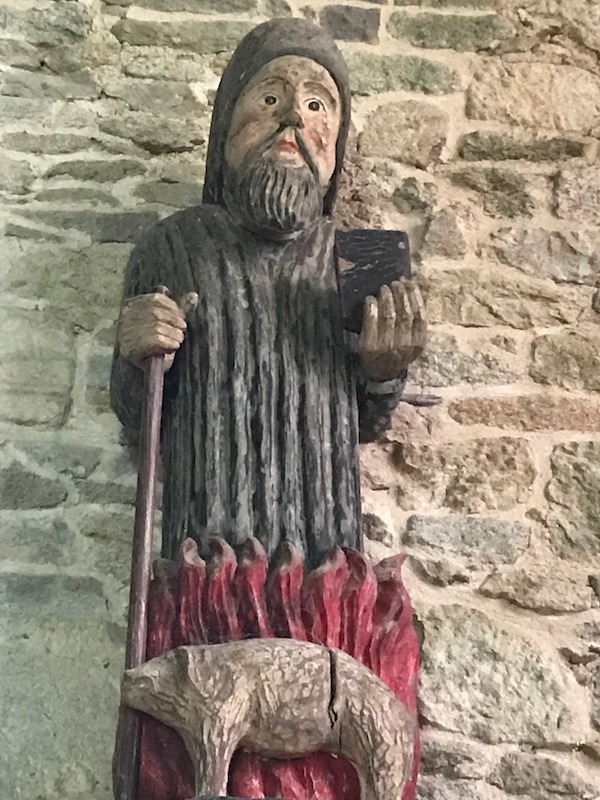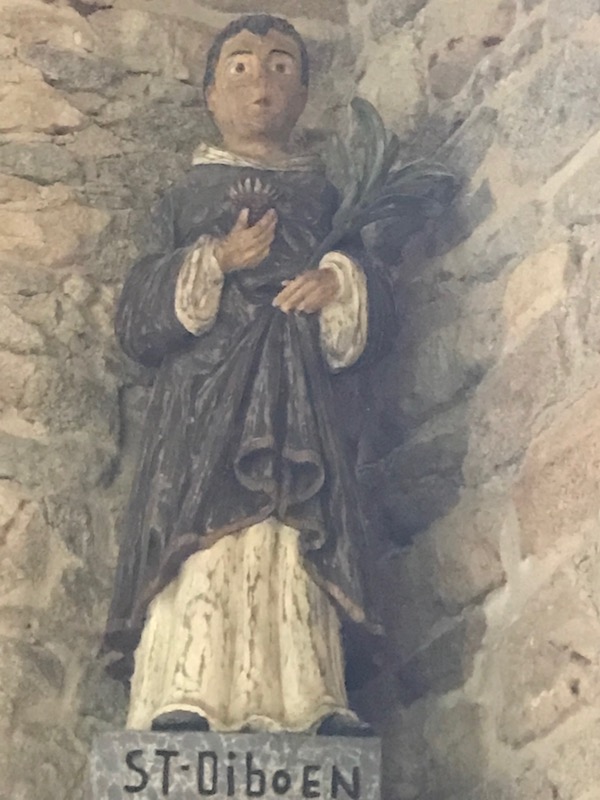Our Blog - Bretagne Trip - Summer 2021 - Sainte-Anne-d'Auray, France
We spent most of a day at the town of Sainte-Anne-d'Auray and its "sanctuary". It is the third most popular pilgrimage site in France, after Lourdes and Lisieux. The complex includes a basilica and cloister, as well as a memorial garden, fountain, and even an academy of music and art.
The legend goes that in the village of Keranna, Saint Anne (mother of the Virgin Mary) appeared to a local peasant multiple times between 1623 and 1625. Then in March 1625, an old statue of Saint Anne was discovered. A small shrine and chapel was built here by the Carmelites. People began making pilgrimages to the chapel, which became too small and, in 1866, a new basilica was started.
La Scala Santa was built by the Carmelites in 1662 in front of the porch of the first chapel to facilitate religious ceremonies. The name means "Holy Staircase". The chapel no longer exists so it looks a little out of place. It now just sits in the middle of a small park and on the Basilica-side, you can see how it would have been open to the chapel to allow people to enter up the two staircases.

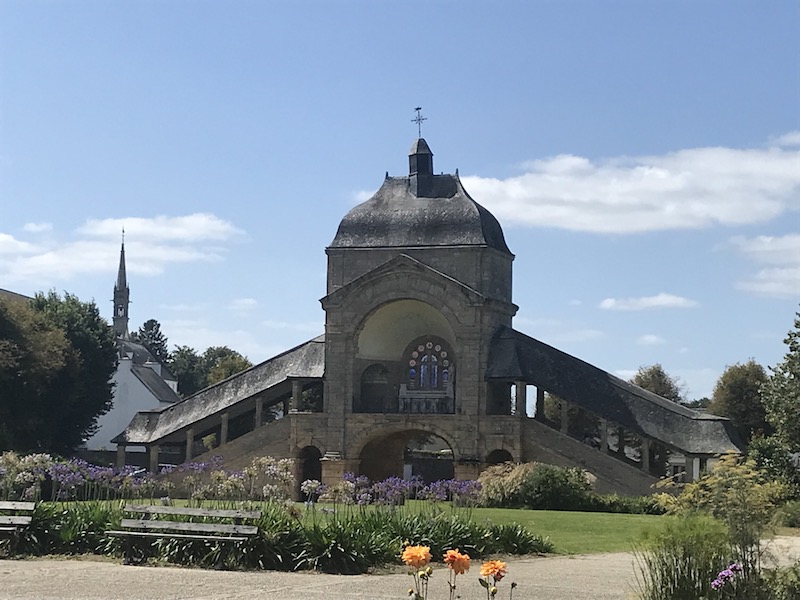
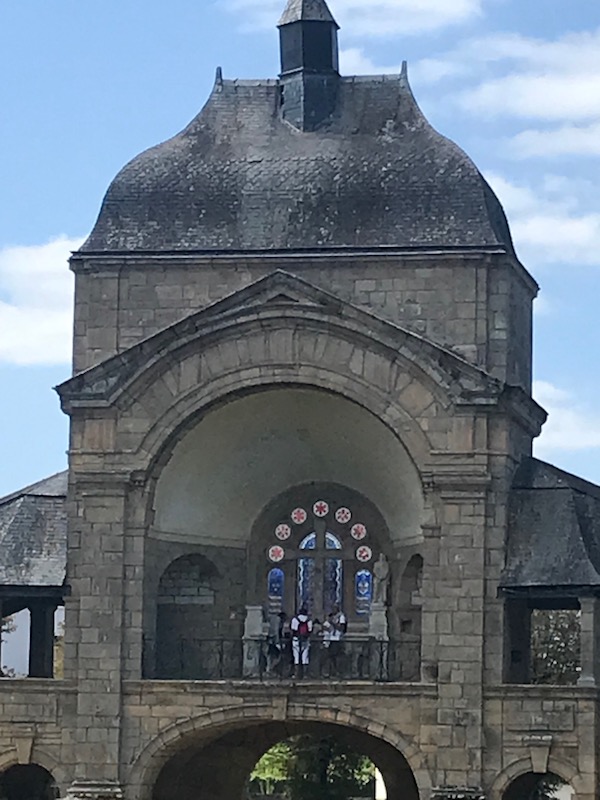
Within the sanctuary is a memorial garden with a statue of Saint Anne.

Also in the park is this memorial, which was created to remember the 240,000 people from the Brittany region who died during World War I (1914-1918).
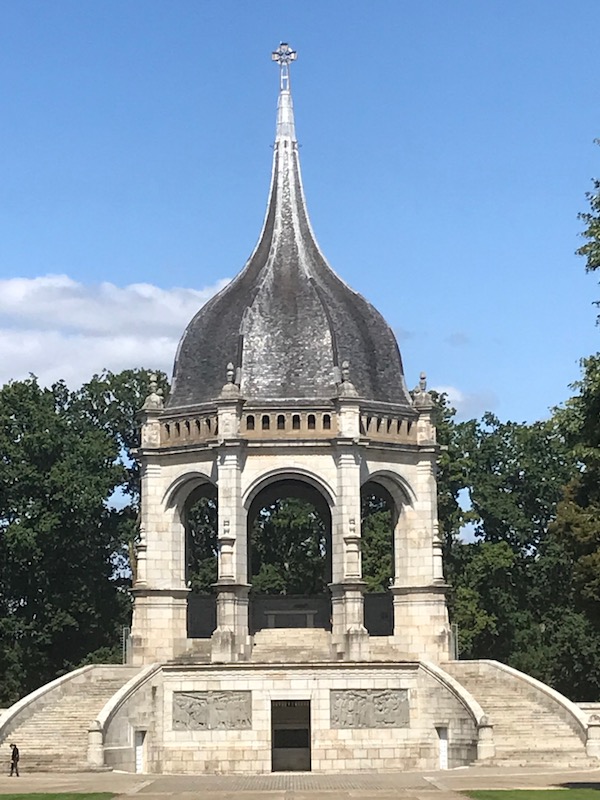
The basilica is a combination of Gothic and Renaissance styles. Although designed and built like this, to me it looks like several churches put together. The round columns on the front are quite interesting. The carvings over the central doors are really wonderful and in great shape for being over 150 years old.

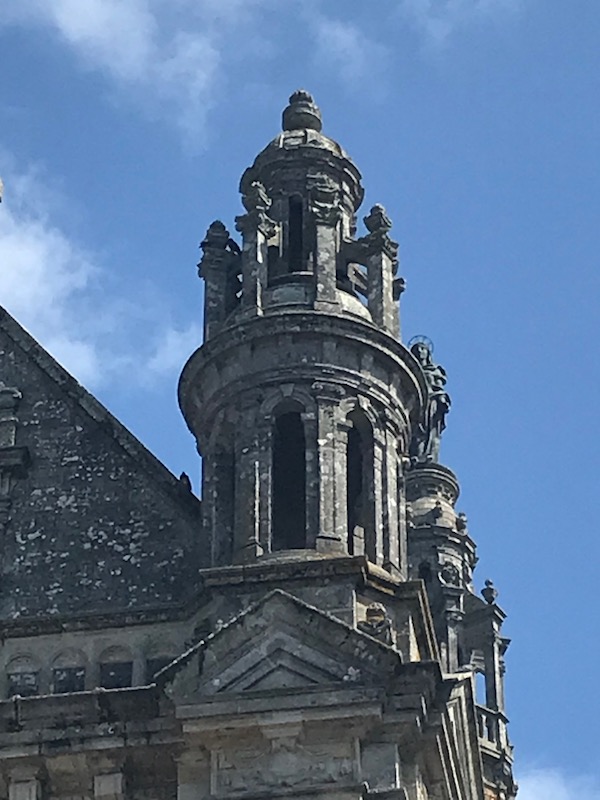
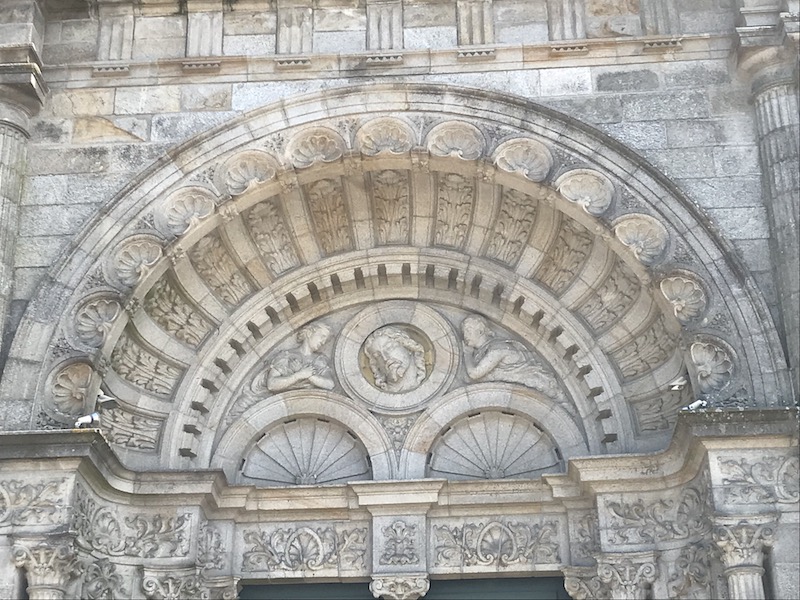
The interior structure is typical of French churches of the time, with a nave and 2 side aisles. It is quite tall with really nice ribbed vaults on the ceiling.
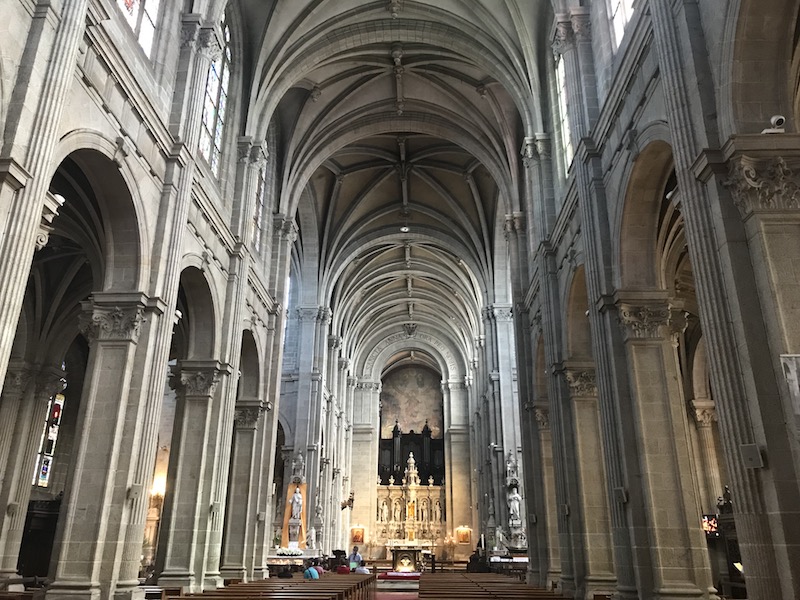

This is the Altar of Saint Anne. Supposedly, the altar contains a fragment from the arm of Saint Anne, offered by King Louis XIII in 1639. The altarpiece includes seven bas-reliefs carved in Carrara marble by Alexandre Falguière, representing the main stages of the life of Saint Anne.
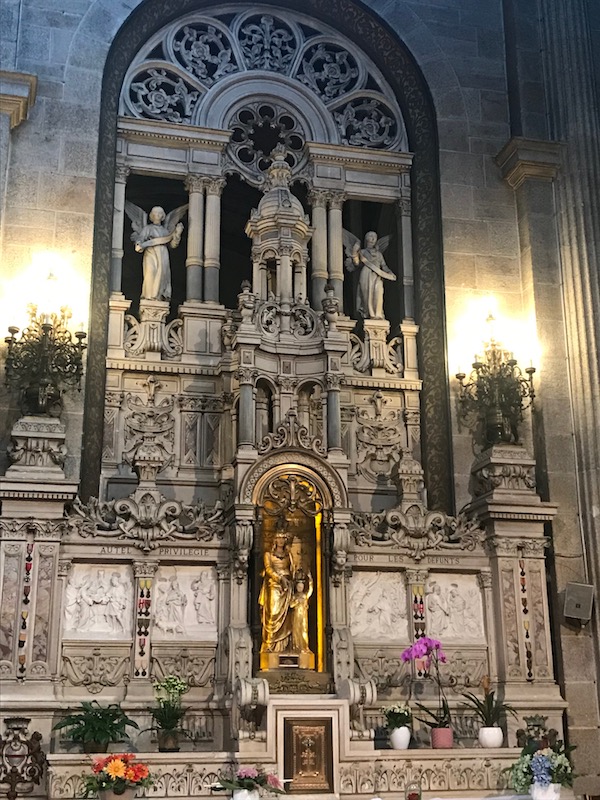
A couple other altar pieces, which are very ornately carved.
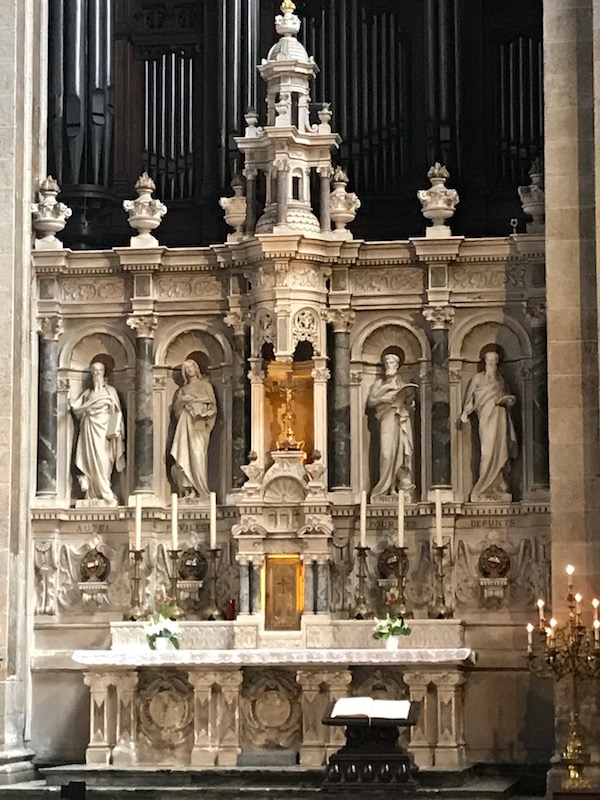
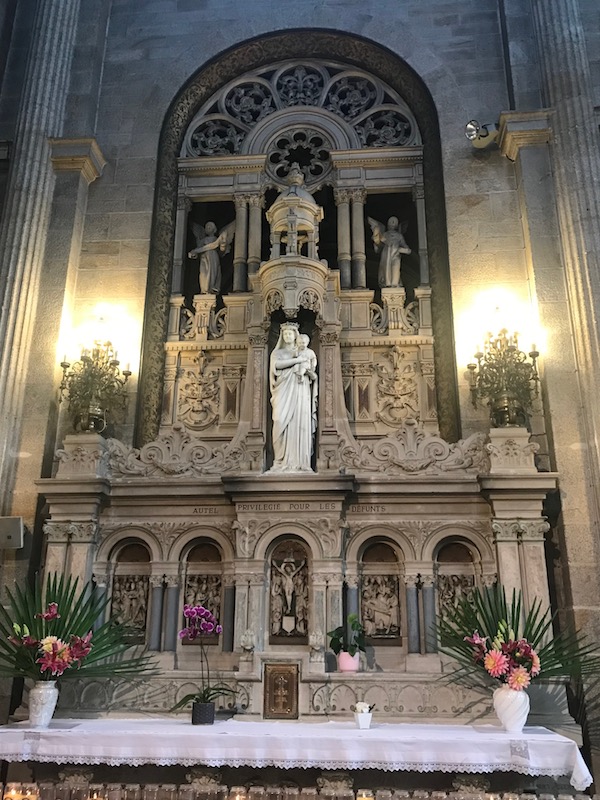
This is a lovely fresco on the ceiling of one of the smaller chapels.
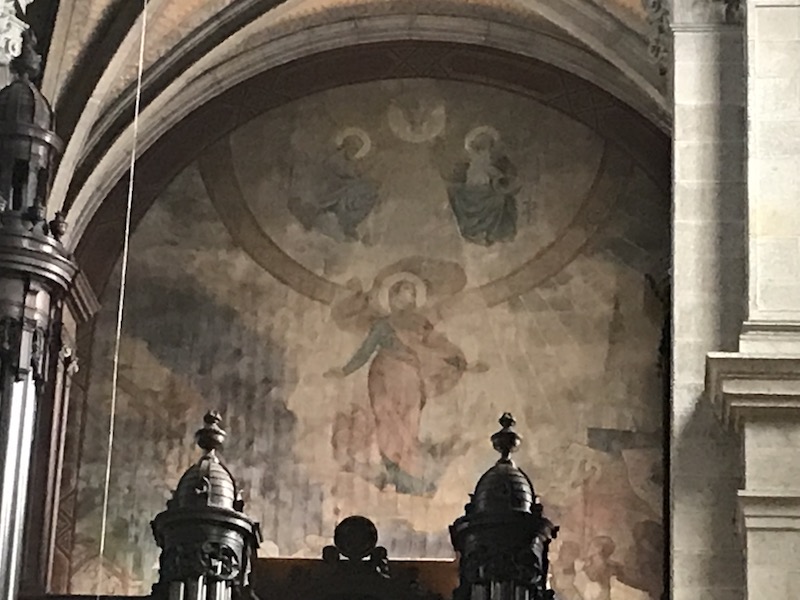
There are quite a few interesting stained glass windows ... some rather "normal" and others .... well ... This first one shows the La Scala Santa in front of the basilica. Some are more classical in style, with a saint in the middle (2nd one), and then very modern ones (3rd and 4th pictures below).
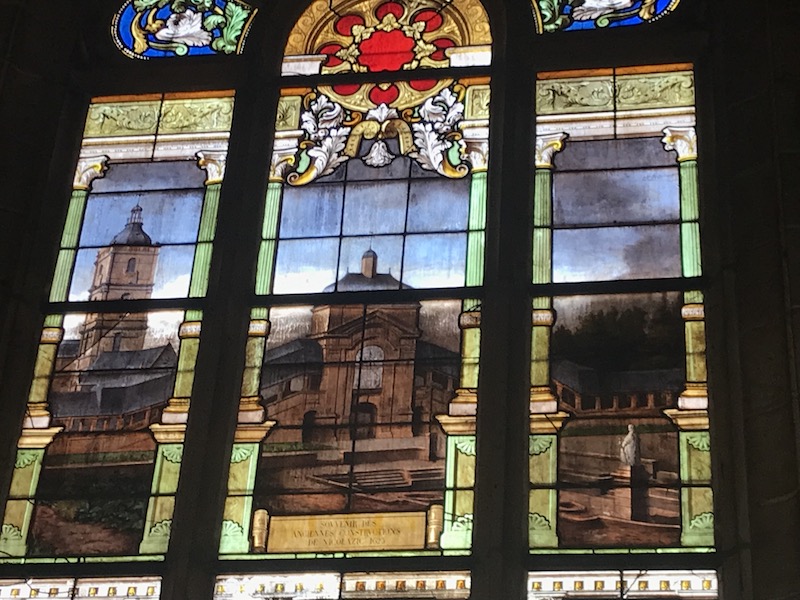
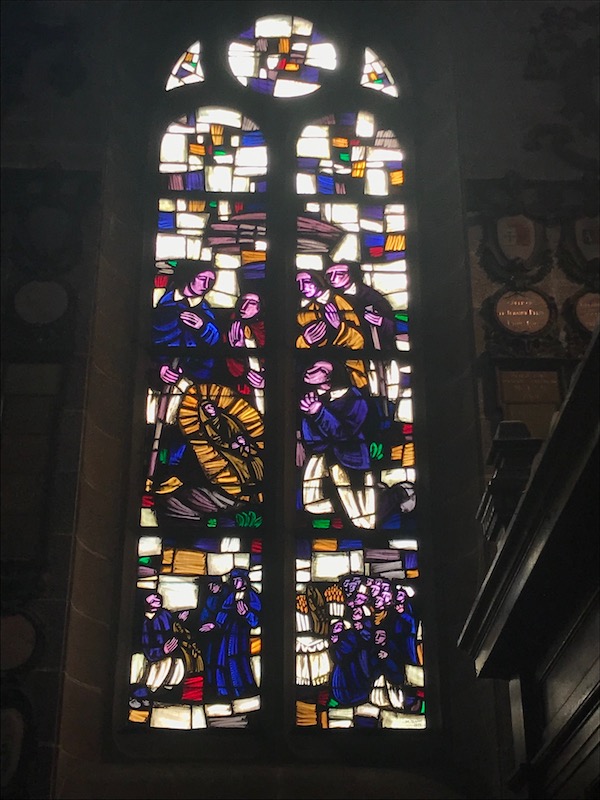
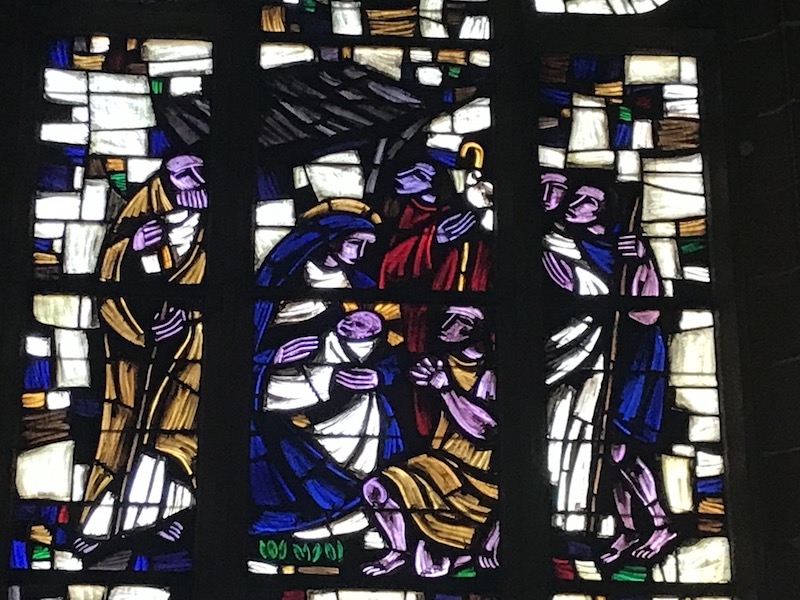
And a couple small rose windows.
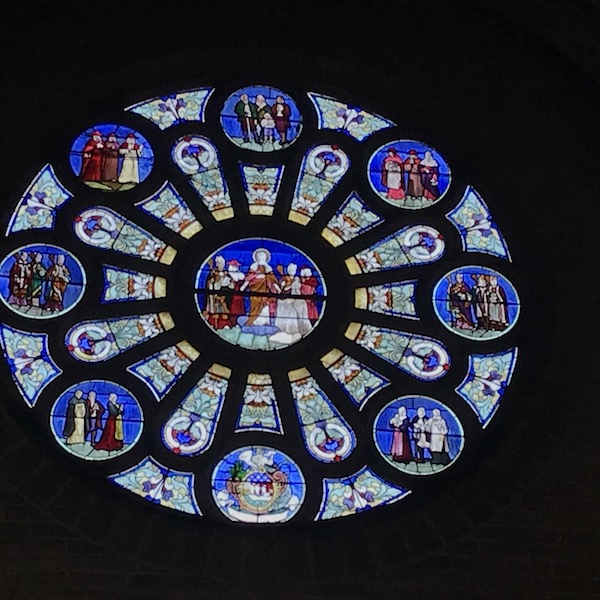
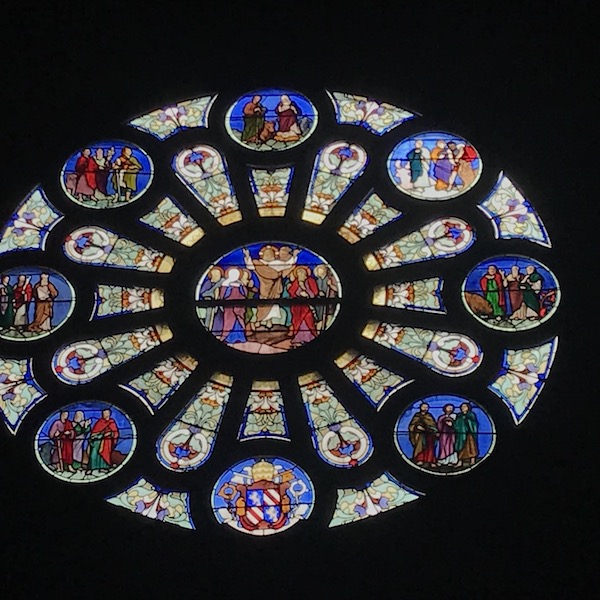
The cloister, located behind the basilica, was built in the 17th century by the Carmelite fathers. It is the oldest monument in the city.
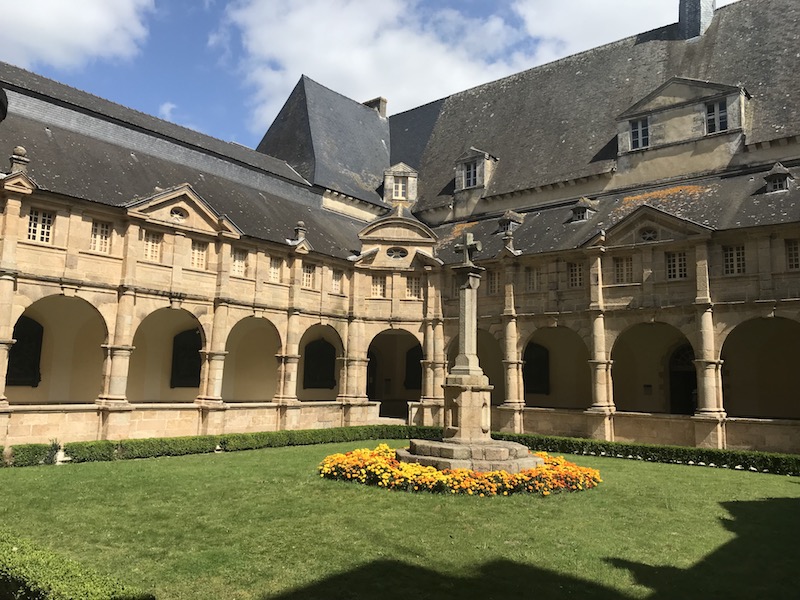

We then took a walking tour outside of town, walking past the house where Yves Nicolazic and his family lived. The house was severely damaged in a fire in 1902, but restored five years later. A statue of St. Anne stands on the site of the barn, where the apparitions are said to have taken place.
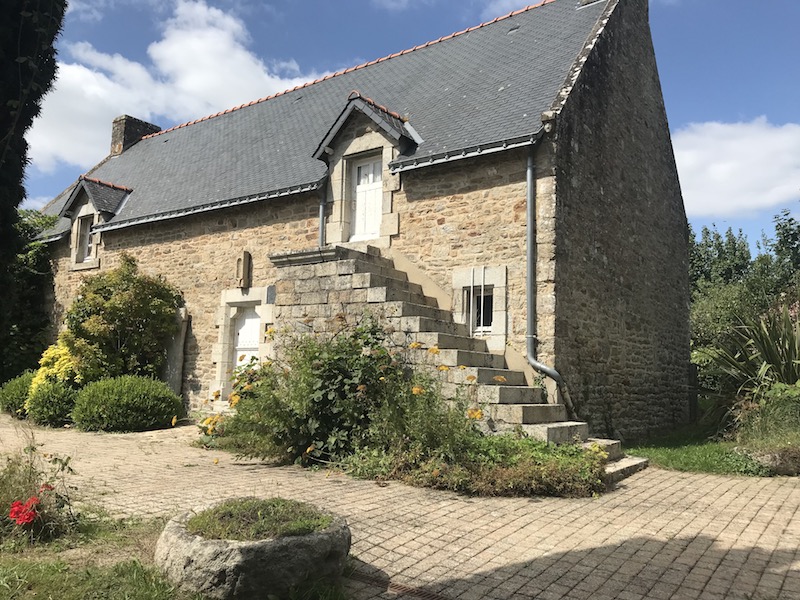
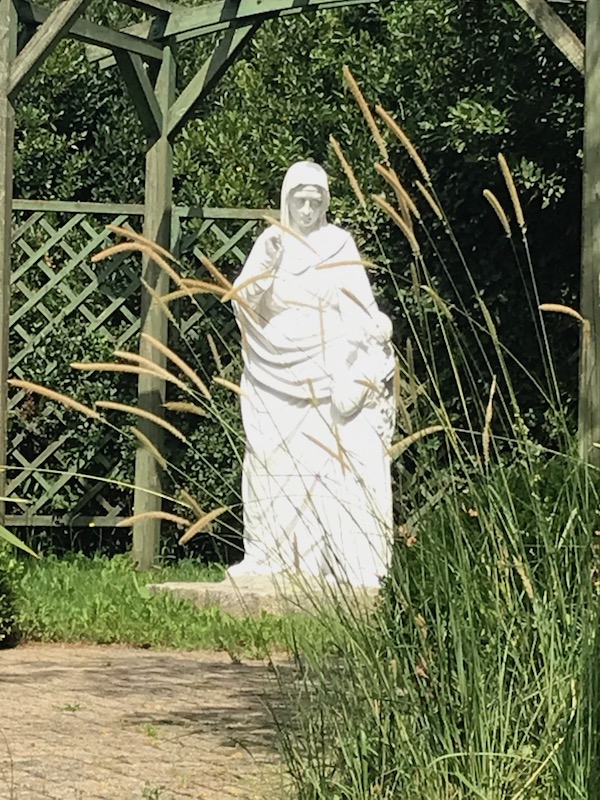
Our walking path took us out to an old church that was basically in the middle of someone's side yard. It was quite small but had probably the most information of almost any church on our trip in Brittany!! This is the Chapel of Notre Dame a Gornevec and the original chapel was built in the 11th century by monks from Saint-Gildas de Rhuys. During the 15th century, the transept and choir were rebuilt in carved stone but the original foundations were kept and used. The nave was rebuilt and covered in 1543. It prospered throughout he 19th century but then around 1920, part of the roof collapsed. Here are a few pictures from the outside, including the original ... the small stones from the original 11th century church and the larger, more square, stones from the 15th century.
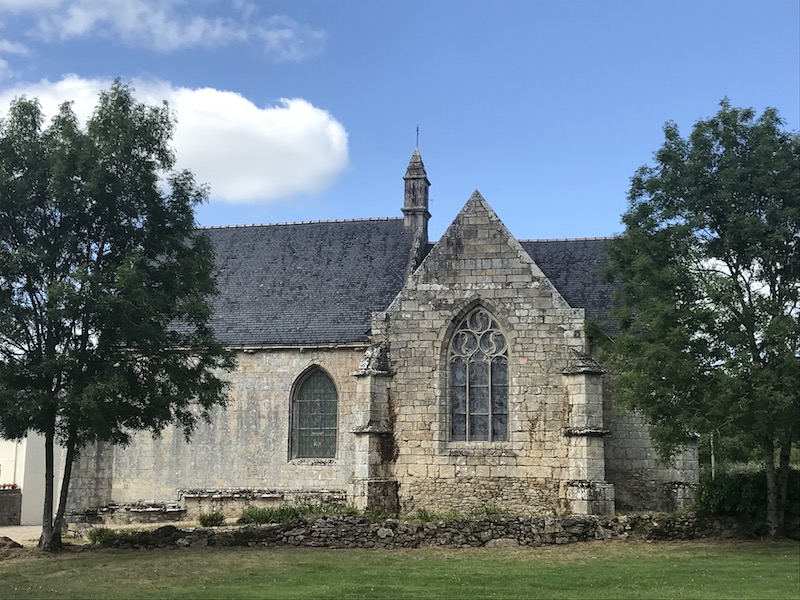
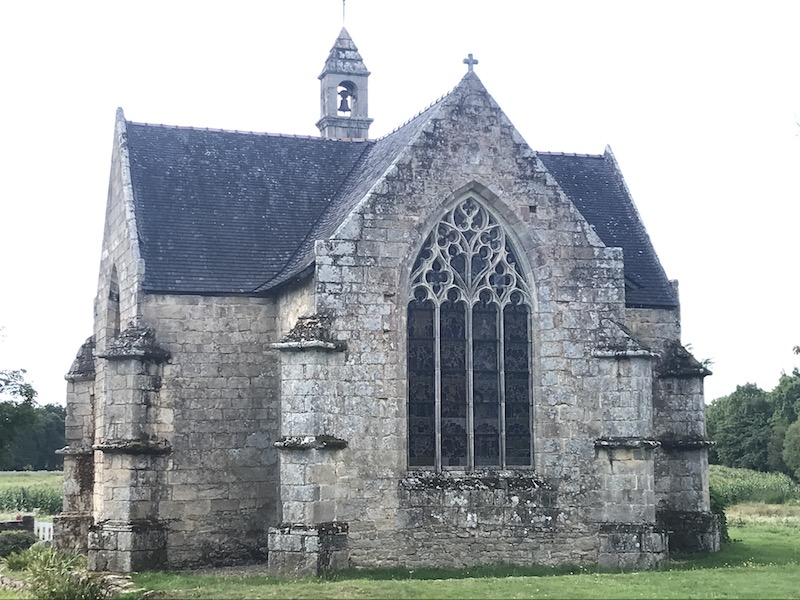
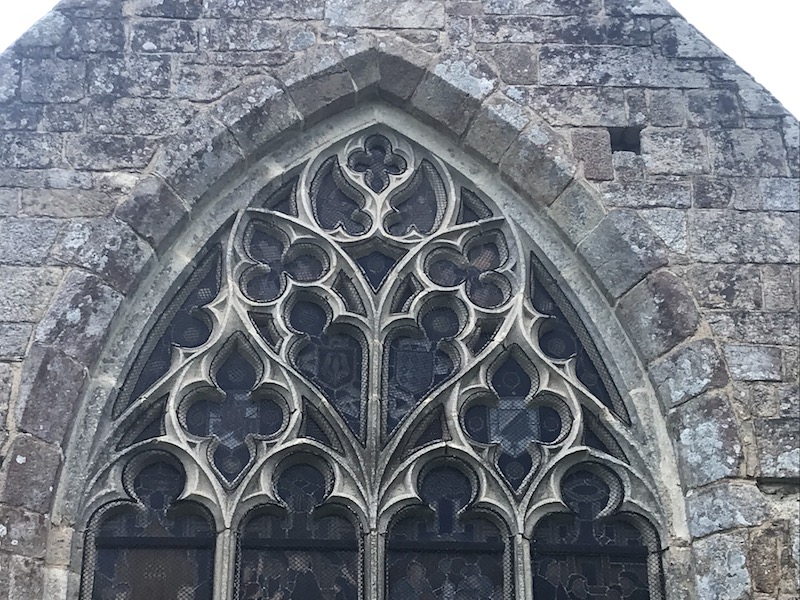



Inside, they had pictures that showed what the church looked like before the restoration work. The first is what it looked like originally and then after the initial work. The restoration work started in 1994.
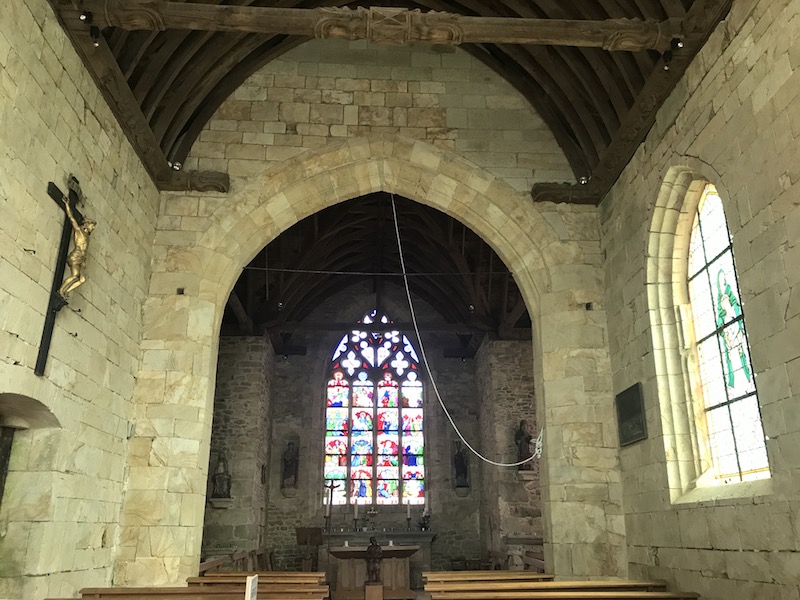

Luckily, they had enough information on the framework of the 15th and 16th century roof to be able to reconstruct all of the detailed elements identically. Not the easiest to see, but on the beams are dragon heads called "engoulants". The name comes from "guele" meaning mouth, as it looks like the dragons are holding the beams in their mouths.
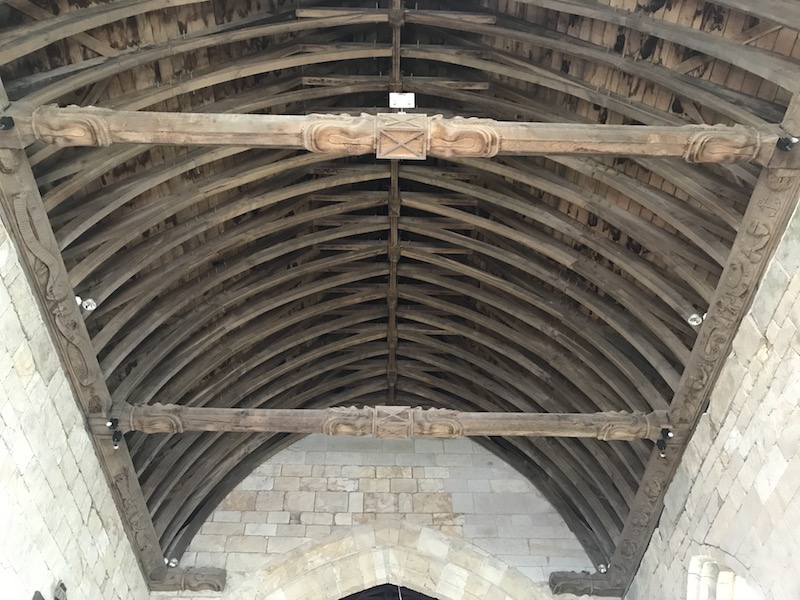
The carvings on the sides are also very interesting, also recreated identically to the original church. The inscriptions trace the history of the chapel. Some beams show the Lords Prayer using icons, the dates when the church was built and restored and names of the mayor at the time. There are also carvings of various craftsmen and their tools that were used in the reconstruction.






There was also some very nice stained glass windows. In the South transept, we see Saint Anthony preaching to the fish.
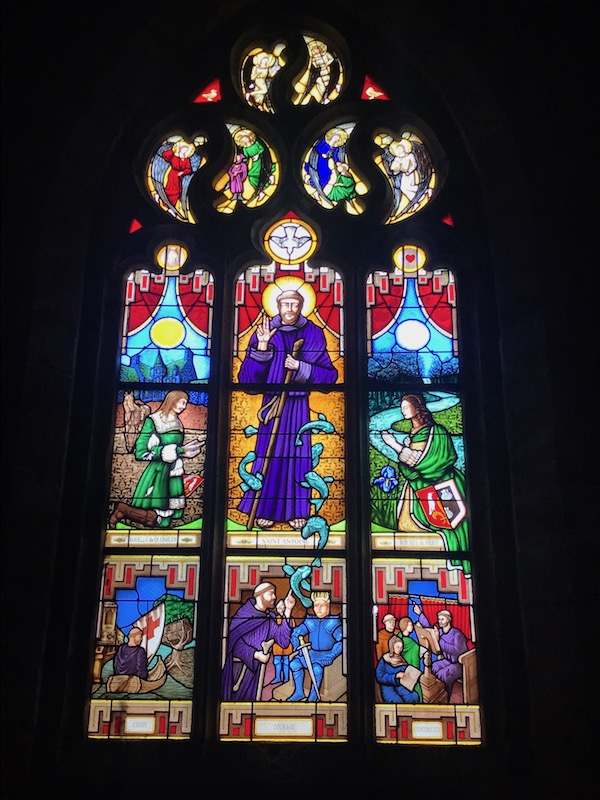
This window shows the the 7 Sorrows and 7 Joys. The left 2 columns show the sorrows: from the left bottom going up we see the chapel in ruins, the massacre of the innocents, the prophecy of Simeon to Mary, Jesus lost in the temple of Jerusalem. Then 2nd column going up from the bottom: Judas and the arrest of Jesus, the crucifixion, the pieta, and Jesus being buried. The right 2 columns are the Joys: from the bottom to the top in the 3rd column are the angel Gabriel announcing Marys pregnancy, the wise men presenting gifts to Jesus, Jesus found in the temple of Jerusalem, and Jesus entering Jerusalem. Then the last column from the bottom, the last supper, the resurrection, and the Virgin Mary rising up to heaven. The last frame in the upper-right is the chapel restored, with a monk from Rhuys and a Breton woman in traditional headpiece from the town of Auray.
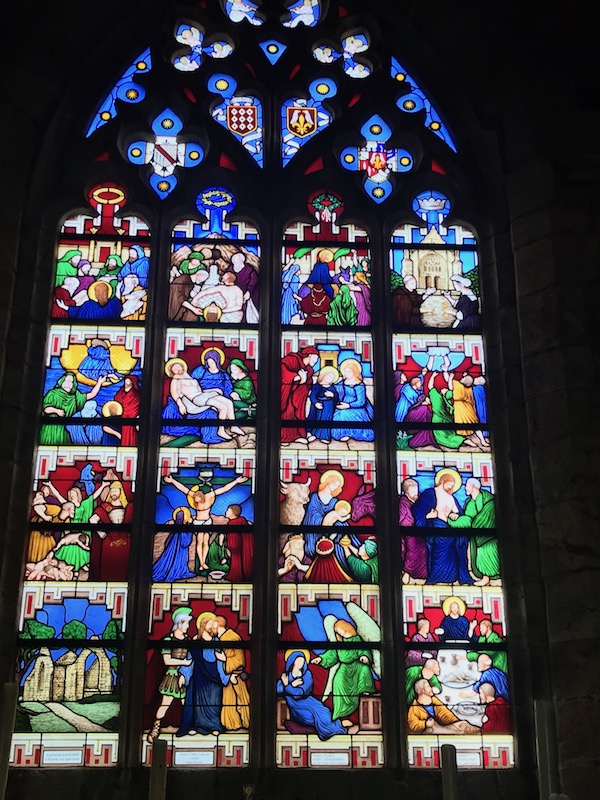
The window in the northern transept portrays the Tree of Jesse. Jesse appears laying down at the bottom surrounded by 2 prophets. There are 12 kings seated on the branches of the tree, symbolizing the 12 tribes of Israel and the 12 Apostles. At the top, you can see Christ on the cross and the Virgin Mary.
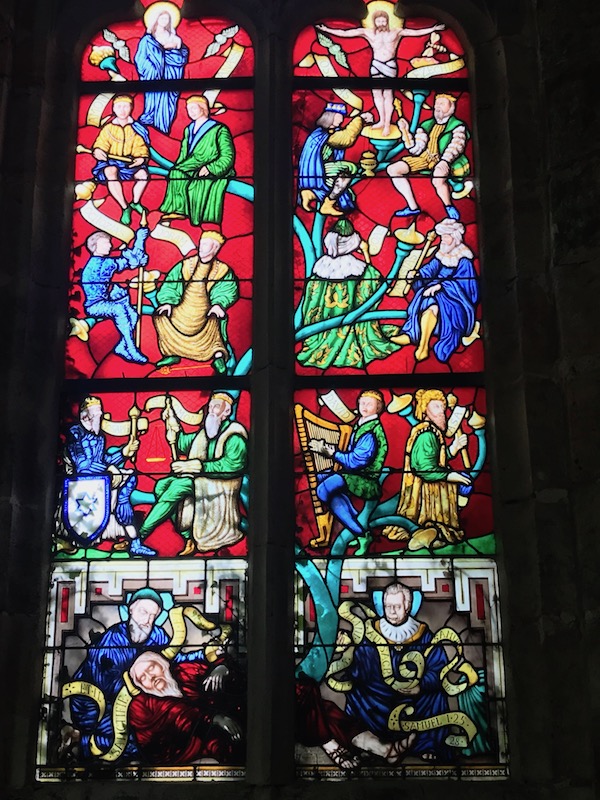
A couple of the old wooden carvings.
